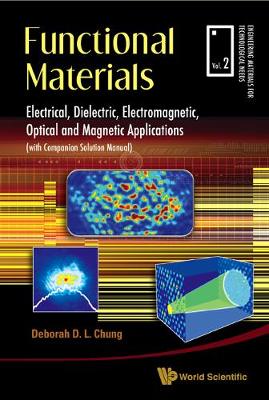Engineering Materials For Technological Needs
2 primary works
Book 2
The development of functional materials is at the heart of technological needs and the forefront of materials research. This book provides a comprehensive and up-to-date treatment of functional materials, which are needed for electrical, dielectric, electromagnetic, optical, and magnetic applications. Materials concepts covered are strongly linked to applications.Textbooks related to functional materials have not kept pace with technological needs and associated scientific advances. Introductory materials science textbooks merely gloss over functional materials while electronic materials textbooks focus on semiconductors and smart materials textbooks emphasize more on limited properties that pertain to structures.Functional Materials assumes that the readers have had a one-semester introductory undergraduate course on materials science. The coverage on functional materials is much broader and deeper than that of an introductory materials science course.The book features hundreds of illustrations to help explain concepts and provide quantitative information. The style is general towards tutorial. Most chapters include sections on example problems, review questions and supplementary reading.This book is suitable for use as a textbook in undergraduate and graduate engineering courses. It is also suitable for use as a reference book for professionals in the electronic, computer, communication, aerospace, automotive, transportation, construction, energy and control industries.
Book 3
'The field of carbon materials is huge and often difficult to comprehend, but this book is easy to read and methodically covers the subject, including presenting materials properties and performance data with clear illustrations and graphs. References include relevant older and up-to-date sources of information. The book is tutorial style in nature and is an excellent resource for senior undergraduates, graduate students, researchers, and anyone who wants to learn more about carbon and incorporate carbon materials into new applications.'MRS BulletinElemental carbon materials take numerous forms including graphite, carbon fiber, carbon nanotube, graphene, carbon black, activated carbon, fullerene and diamond. These forms differ greatly in the structure, properties, fabrication method, and applications. The applications of these carbon forms include electronic, electromagnetic, electrochemical, environmental and biomedical applications. Carbon materials are a subject of intense research, with strong relevance to both science and technology.This book provides a tutorial-style and up-to-date coverage of the carbon forms. In addition to an introductory chapter on carbon materials, the book includes chapters on graphite, graphene, carbon black, activated carbon, carbon fibers, and carbon nanofibers/nanotubes. For example, the chapter on graphite covers various materials in the graphite family, including polycrystalline graphite, pyrolytic graphite, turbostratic carbon, intercalated graphite, graphite oxide, exfoliated graphite and flexible graphite, in addition to their electronic and mechanical properties.This book is suitable for use as a textbook for undergraduate and graduate students in science and engineering, and as a reference book for professionals. It is dedicated to the memory of the author's PhD thesis advisor, Professor M S Dresselhaus (1930-2017) of Massachusetts Institute of Technology.

